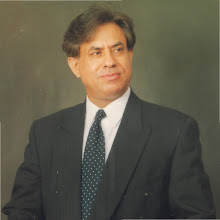On July 1, 2002, the Rome Statue of the International Criminal Court (ICC) entered into force, creating the first permanent and independent court capable of investigating the most serious violations of international humanitarian law, such as genocide, war crimes, and crimes against humanity.
The statute was adopted in July 1998, with 120 nations voting in favor and 21 abstaining. US President Clinton signed on to the ICC in the last days of his term in office. In May 2002, the Bush administration withdrew the US signature, and that August President Bush signed into law the American Service Members' Protection Act of 2002. The new law prohibits cooperation with the ICC and authorizes the use of military force to liberate any American or citizen of a US-allied country being held by the court.
Cellular phones are helping to bridge the telephonic divide between rich and poor. Building cell phone towers is cheaper than stringing traditional wires. The industry trends point to time not far off when Pakistan will have more cell phones than fixed-lines.
Global advertising expenditures hit $444 billion in 2002 (Pakistan spends some Rs 5 billion). The advertisers are marketing to children—both to influence consumption preferences early and to take advantage of the growing amounts of money people are spending on children. Children are bombarded with thousands of ads per year. Half of these ads encourage children to request unhealthy food and drinks.
About 80 percent of the world depends on traditional and complementary/alternative medicine for treating and curing illness. In Pakistan where the government managers yell with full lungs about their wondrous health reforms, it nurtures some 600,000 quacks or in plain language, killers. Pakistan has more or less 40-50 percent of the population using traditional remedies. It’s most serious problem is the existence of an unchecked parallel system run by quack and cluck service providers including barbers.
World military expenditures in 2001 were conservatively estimated at $839 billion—almost $100 million every hour or $2.3 billion each day. The United States is now the world’s sole military colossus, accounting for 36 percent of all military spending, or $302 billion. US spending is now projected to rise to $414 billion by 2009. With 3.9% of the GDP, Pakistan ranks 26th worldwide in military expenditure. If Kashmir conflict with India is resolved, it would require a small military and an inconsequential expenditure.
Infectious and parasitic diseases such as tuberculosis, AIDS and malaria cause a quarter of the world's deaths each year. Cancer, heart disease, and chronic respiratory disease cause twice that.
These diseases primarily affect populations at opposite ends of the income scale—the affluent and the impoverished. People in Africa and Southeast Asia, many of whom lack access to clean water, adequate nutrition, or proper healthcare, account for 75 percent of global deaths from infectious diseases, but make up just 36 percent of the world's population. Europeans and Americans constitute just 28 percent of world population, but account for 42 percent of deaths from cardiovascular diseases and cancers—diseases that are often triggered by lifestyle factors such as smoking, being sedentary, and eating foods rich in salt, sugar, and fat. In Pakistan statistics show a very dissimilar picture where death rate is 9.26 per 1000 persons, one quarter of all people attending hospital are ill due to water-related diseases.
Year 2002 was the second hottest since record keeping began in the 1880s. The global average temperature climbed to 14.52 degrees Celsius. The nine warmest years on record have occurred since 1990, and scientists expect that the temperature record set in 1998 will be surpassed by a new high in 2005.
Scientists have linked the warming trend that accelerated in the twentieth century to the buildup of carbon dioxide and other heat-trapping gasses. By burning fossil fuels, people released some 6.44 billion tons of carbon into the atmosphere in 2002. With less than five percent of the world’s population, the US is the single largest source of carbon from fossil fuels—emitting 24 percent of the world’s total.
Wind power is now the world’s fastest growing power source. Global wind-generating capacity grew by 27 percent in 2002 and is projected to expand 15-fold over the next 20 years. Europe has nearly 73 percent of global wind capacity, with more than half of this capacity in Germany. In 2002, Denmark, a nation of 5 million people, installed more wind capacity than all of the US, a nation of more than 290 million. Despite many new and more efficient technologies are approaching fast, Pakistan continues to hang upon dam technology that is fast becoming obsolete. Regardless of contrariety for some dams such as Kalabagh Dam, Pakistan intellectualizes that dam technology is the only option.
In 2002, international tourism and related activities generated some 199 million jobs—one in every 13 positions worldwide. Despite an industry slowdown caused by 9/11 events and the global economic situation, tourism-related spending accounted for some $4.2 trillion of global economic activity in 2002.
Europe remained the top tourist destination, capturing 58 percent of arrivals in 2002, though its share of the world's tourists continues to fall from a high of 75 percent in 1964. France was the most visited country in 2002, followed by Spain, the US, Italy, and China. Despite Pakistan blessed with rich scenic beauty, its share in this thriving industry is almost sweet nothing. Contrarily, for the first time, in 2002, the share of the world's tourists visiting East Asia and the Pacific surpassed the portion visiting the Americas.
Meat consumption levels are by no means evenly distributed around the world. In industrial nations, consumers eat more than 80 kilograms of meat per person per year. Comparatively, in Pakistan, consumption sits at just 20 kilograms. (www.asifjmir.com)
A Distinct Candle is Extinguished!
-
“I am announcing, with a heavy heart, the sudden demise of my beloved
father, Asif Javed Mir, due to heart failure on 18th December,2013. I
request to ever...
11 years ago





No comments:
Post a Comment